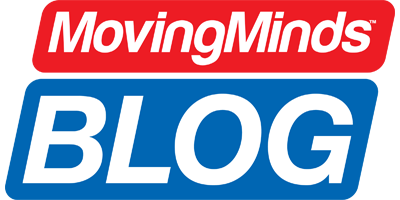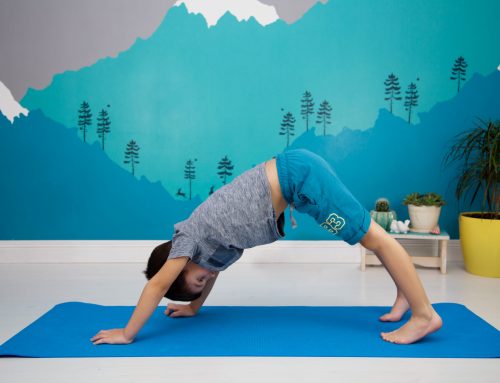The first question I am asked when I present information on active seating and active classrooms is: Does it work? After teaching in a kinesthetic classroom and working at a school with four active classrooms, the answer is yes. In our school, it has shown to improve student behavior, grades, and test scores while keeping kids moving and happy.
A kinesthetic classroom releases students from a passive learning setting, glued to their seats, with decreased oxygen in their brains. An active learning environment engages students physically and creatively with what they are learning in the classroom. Simply by getting students out of their seats, we encourage new levels of self-discovery and self-expression. By allowing students to learn the curriculum through movement, we help them make deeper emotional, interpersonal, and kinesthetic connections to academic subjects. According to Harvard Medical School’s Professor John Ratey in a 2008 Education Week article, physical exercise “puts the brain of the learners in the optimal position for them to learn.”
How Exercise Improves Brain Health
There are many ways exercise improves cognitive health. Aerobic exercise (also known as cardio) raises your heart rate and increases blood flow to your brain. Increased heart rate is accompanied by harder and faster breathing depending on the intensity of your workout. As your increased breathing pumps more oxygen into your bloodstream, more oxygen is delivered to your brain. This leads to neurogenesis (1)—or the production of neurons—in certain parts of your brain that control memory and thinking. Neurogenesis increases brain volume, and this cognitive reserve is believed to help buffer against the effects of dementia.
Another factor mediating the link between cognition and exercise is neurotrophins, which are proteins that aid neuron survival and function (2). It has been noted that exercise promotes the production of neurotrophins, leading to greater brain plasticity, and therefore, better memory and learning. In addition to neurotrophins, exercise also results in an increase in neurotransmitters in the brain, specifically serotonin and norepinephrine, which boost information processing and mood. (3)
Research Proves Physical Activity Benefits Students

Dr. John Ratey, Harvard Medical School, says activity breaks during the school day create better learners because of the impact of movement on the brain.
“When you move, you stimulate all the nerve cells that we use to think with, and when you stimulate those nerve cells, it gets them ready to do stuff,” said Ratey, an expert in neuropsychiatry and author of Spark: The Revolutionary New Science of Exercise and the Brain. He has spent the past 30 years focusing on the “attention systems” of the brain.
“When you exercise, you turn on the attention systems, so that means you’re (paying) better attention, you’re able to deal with more frustration, you’re able to stay with it longer,” he said. “You’re able to manipulate information by turning … on the front part of our brain to make it work better, and that’s really key and important in terms of taking in information as well as performing with it.”
In a recent study, 26 previous studies were reviewed, looking at the impact of physical activity on academic performance. It found that kids who get extra physical activity in school do better in reading and math.
The study, published in the journal Pediatrics, involved more than 10,000 children between the ages of 4 and 13. It found that physical activity, especially physical education, improves behavior in classrooms and is a boost to academic achievement, especially math-related skills and reading.(4)
Time to Get Students Moving
With what we know as educators and what the research proves, we need to get students moving. Whether it is kinesthetic furniture or brain boosting physical activities, we need to end the restrictive setting of a desk. We need to get blood flowing through the body and brain. This image shows how brain activity improves after just 20 minutes of walking. This is the brain we want learning in our classrooms and taking tests at the end of the school year.
- Van Praag, H. (2008). Neurogenesis and exercise: past and future directions. Neuromolecular medicine, 10(2), 128-140.
- Livingston,G.,Sommerlad,A.,Orgeta,V.,Costafreda,S.G.,Huntley,J.,Ames,D.,…&Cooper, C. (2017). Dementia prevention, intervention, and care. The Lancet, 390(10113), 2673-2734.
- Meeusen, R., & De Meirleir, K. (1995). Exercise and brain neurotransmission. Sports medicine, 20(3), 160-188.
- Wallace, Kelly, Move over, ‘sit still’! Why Kids Need to Move in School by Kelly Wallace, CNN, Thu May 3, 2018

David Wilkie is an intermediate school Health, Fitness, and Nutrition teacher. He is a S.T.A.R. Teacher of the Year in South Carolina. David received his Master’s Degree in Elementary Education from Southern Wesleyan University and undergraduate degree in Elementary Education and Middle School Social Studies from the University of South Carolina. He received his certification to be a Kinesthetic Classroom and Active Brains Learning Lab Trainer through KidsFit and Action Based Learning.






Leave A Comment